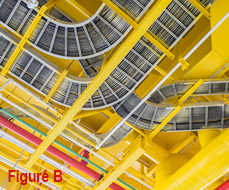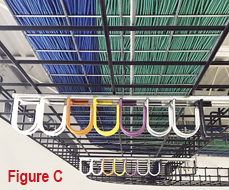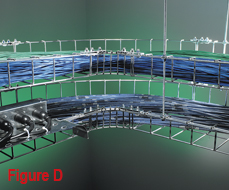COVID-19 exposed the vulnerability of global supply chains. After decades of outsourcing manufacturing to nations with cheaper labor, American businesses are now paying the price. Three years into the pandemic US manufacturers are still subject to supply chain disruptions stemming from China’s zero-tolerance COVID policy and other regional outbreaks that cause sudden labor shortages and unexpected factory closures, a global shipping container and port crisis, and inflationary prices for critical raw materials and components.
One of the most frequently cited shortages holding up US factories: computer chips that go into everything from automobiles to cell phones.
Fortunately, US manufacturers got the wake-up call. There has been a renaissance in domestic factory investment and construction fueled by a desire for increased self-reliance and control over supply chains plus enticing federal government incentives to onshore manufacturing.
There are mega computer chip plants under construction in Ohio, New York, and Arizona aimed at reclaiming America’s dominance in semiconductor production, and countless more factories scaling up to make components, tools, and subassemblies for all kinds of products currently made overseas right here in the USA, curbing our dependence on unreliable foreign supply chains for critical parts.
It is in the areas of efficient factory investment, either the expansion/modernization of existing facilities or new plant construction, that Snake Tray plays a role in helping to bring manufacturing – and jobs – back home
The cable plant is a critical subsystem of every factory
The modern factory runs on power and data, employing robots and specialized machinery on assembly lines. Each asset is hardwired for voltage and equipped with multiple sensors to capture data and monitor performance. To keep pace with changing market conditions and customer tastes, factories must be able to retool on the fly.
Toward that end, manufacturers are redesigning floor layouts into work cells with the ability to dynamically move, cluster, and network machines together as needed to create optimal workflows. An efficient cable management system is required to achieve this flexibility.
Further, the people that install, operate, and maintain these production lines use wireless technology to log into jobs, monitor system performance, and for real-time communications on the factory floor. In today’s factory cables are everywhere, including those supporting wireless activities.
Speaking of people, the keys to bringing profitable manufacturing back to the US are to boost production efficiencies to lower the cost per unit of whatever is being built, and to streamline other areas of factory operations to offset the higher wages paid to American workers.
This increased need for versatility and connectivity has rendered the traditional method of using pipe and wire to electrify the factory floor obsolete.
Besides the time consuming and inflexible process of running copper and data lines to a new fixed hardwired position, the cost of skilled electricians – if you can find them – adds thousands to an expense that must be incurred every time there is a change. That’s where Snake Tray comes in.
Look up to Snake Tray
The solution is to move the cable conveyance overhead, creating a ceiling grid of cable pathways that align with work cells on the floor below. Versatile cable dropouts and connectivity enclosures make it easy to roll a machine into its new position and simply connect the equipment to the nearest drop using high ampacity modular plugs to power large pieces of machinery requiring up to 100 amps of voltage, and to RJ-45 ports for network connectivity.
No skilled labor required; no weeks of waiting for electricians, plumbers, and carpenters to complete the job; no stub-ups to trip over on the factory floor.
Snake Tray solutions like the 801 Series Mega Snake steel basket tray (Figure A) and 653 Series aluminum ladders (Figure B) provide the needed capacity, strength, and accessories to carry all the cables necessary for efficient factory operation and floor reconfiguration.




Feed power and data cables to machinery below, and position wireless network access points, cameras, lights, scanners, ancillary systems, and emergency equipment as needed throughout the facility.
Snake Tray cable conveyance systems install in a fraction of the time, labor, weight, and cost of hardwired conduit, and are infinitely more versatile and reusable.
Snake Tray cable conveyance solutions save time when moving machines to reconfigure the factory floor with maximum speed and minimal effort. They eliminate the need to meticulously pre-plan factory floor layout and associated cable runs before construction, and allow cables to be reused afterwards.
Moving a machine? Take the cables with it and plug them in at the new location. Need to separate cables by function? Snake Tray accessories make cable organization and dropouts easy. (Figure C).
Adding more machinery or another production line? Just lay in additional cable into the tray from the nearest terminal, or even create a separate tier to double cable capacity in the same overhead airspace (Figure D).
Further, free air suspension in basket or ventilated trays enables more efficient heat dissipation and keeps the cable plant visible for easy maintenance and repairs.
With Snake Tray, there will aways be a convenient pathway available to get power and connectivity to machinery, drastically reducing the time needed for moves, adds, changes, and replacement of failed equipment on the factory floor to keep production lines moving.
Increase the efficiencies of your factory and bring manufacturing jobs back to America with Snake Tray. Visit us at www.snaketray.com to learn more.

